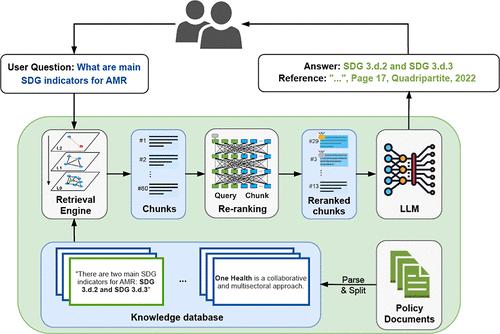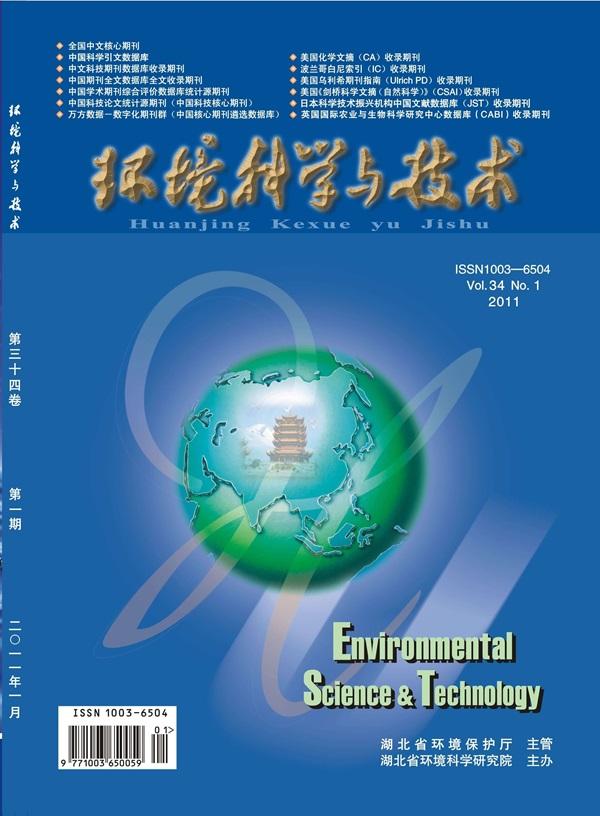Using Large Language Models to Assist Antimicrobial Resistance Policy Development: Integrating the Environment into Health Protection Planning
IF 11.3
1区 环境科学与生态学
Q1 ENGINEERING, ENVIRONMENTAL
引用次数: 0
Abstract
Increasing antimicrobial resistance (AMR) poses a substantial threat to global health and economies, which has led many countries and regions to develop AMR National Action Plans (NAPs). However, inadequate logistical capacity, funding, and essential information can hinder NAP policymaking, especially in low-to-middle-income countries (LMICs). Therefore, major gaps exist between aspirations and actions, such as fully operationalized environmental AMR surveillance programs in NAPs. To help bridge knowledge gaps, we compiled a multilingual database that contains policy guidance from 146 countries composed of NAPs, internal reports, and other guidance documents on AMR mitigations, including environmental considerations. Leveraging this database, we developed an AMR-Policy GPT, a large language model with advanced retrieval-augmented generation capabilities. This prototype model can search and summarize evidence from plans, metadata, and technical knowledge and provide traceable references from global document databases. It was then manually validated to show its proficiency in accurately managing diverse inquiries while minimizing misinformation. Overall, the AMR-Policy GPT offers a prototype that, with the deepening of its database and further road testing, has the potential to support inclusive, evidence-informed AMR policy guidance to support governments, research, and public agencies. A conversational version of our prototype is available at www.liuhuibot.com/amrpolicy.

使用大型语言模型协助抗菌素耐药性政策制定:将环境纳入健康保护规划
抗菌素耐药性(AMR)的增加对全球健康和经济构成重大威胁,导致许多国家和地区制定了抗菌素耐药性国家行动计划(nap)。然而,后勤能力、资金和基本信息的不足可能会阻碍国家行动计划的决策,特别是在中低收入国家。因此,愿望与行动之间存在着重大差距,例如国家行动计划中全面实施的环境抗菌素耐药性监测计划。为了帮助弥合知识差距,我们编制了一个多语种数据库,其中包含146个国家的政策指导,包括国家行动计划、内部报告和其他关于抗菌素耐药性缓解的指导文件,包括环境方面的考虑。利用这个数据库,我们开发了一个AMR-Policy GPT,这是一个具有高级检索增强生成功能的大型语言模型。这个原型模型可以搜索和总结来自计划、元数据和技术知识的证据,并提供来自全局文档数据库的可跟踪参考。然后进行手动验证,以显示其准确管理各种查询的熟练程度,同时最大限度地减少错误信息。总体而言,抗微生物药物耐药性政策GPT提供了一个原型,随着其数据库的深化和进一步的道路测试,该原型有可能支持包容性的、循证的抗微生物药物耐药性政策指导,以支持政府、研究和公共机构。我们的原型的对话版本可以在www.liuhuibot.com/amrpolicy上找到。
本文章由计算机程序翻译,如有差异,请以英文原文为准。
求助全文
约1分钟内获得全文
求助全文
来源期刊

环境科学与技术
环境科学-工程:环境
CiteScore
17.50
自引率
9.60%
发文量
12359
审稿时长
2.8 months
期刊介绍:
Environmental Science & Technology (ES&T) is a co-sponsored academic and technical magazine by the Hubei Provincial Environmental Protection Bureau and the Hubei Provincial Academy of Environmental Sciences.
Environmental Science & Technology (ES&T) holds the status of Chinese core journals, scientific papers source journals of China, Chinese Science Citation Database source journals, and Chinese Academic Journal Comprehensive Evaluation Database source journals. This publication focuses on the academic field of environmental protection, featuring articles related to environmental protection and technical advancements.
 求助内容:
求助内容: 应助结果提醒方式:
应助结果提醒方式:


